Falls and Restraints: Definition, Types, and Importance
VerifiedAdded on 2023/01/16
|15
|653
|90
Presentation
AI Summary
This presentation provides a comprehensive overview of falls and restraints in healthcare settings. It begins by defining restraints and categorizing them into physical, chemical, and environmental types. The presentation emphasizes the importance of restraints in various scenarios, such as during surgery, managing harmful behaviors, patient identification, and preventing falls and injuries. It then delves into the potential complications associated with restraint use, including strangulation, increased agitation, confusion, and skin injuries, highlighting the need for careful application by healthcare professionals. The presentation concludes by detailing common restraint methods, such as mitts, lap restraints, bed rails, abdominal belts, and wrist restraints, providing a valuable resource for healthcare professionals and students alike. This presentation is a resource that can be found on Desklib, a platform that provides past papers and solved assignments.
1 out of 15
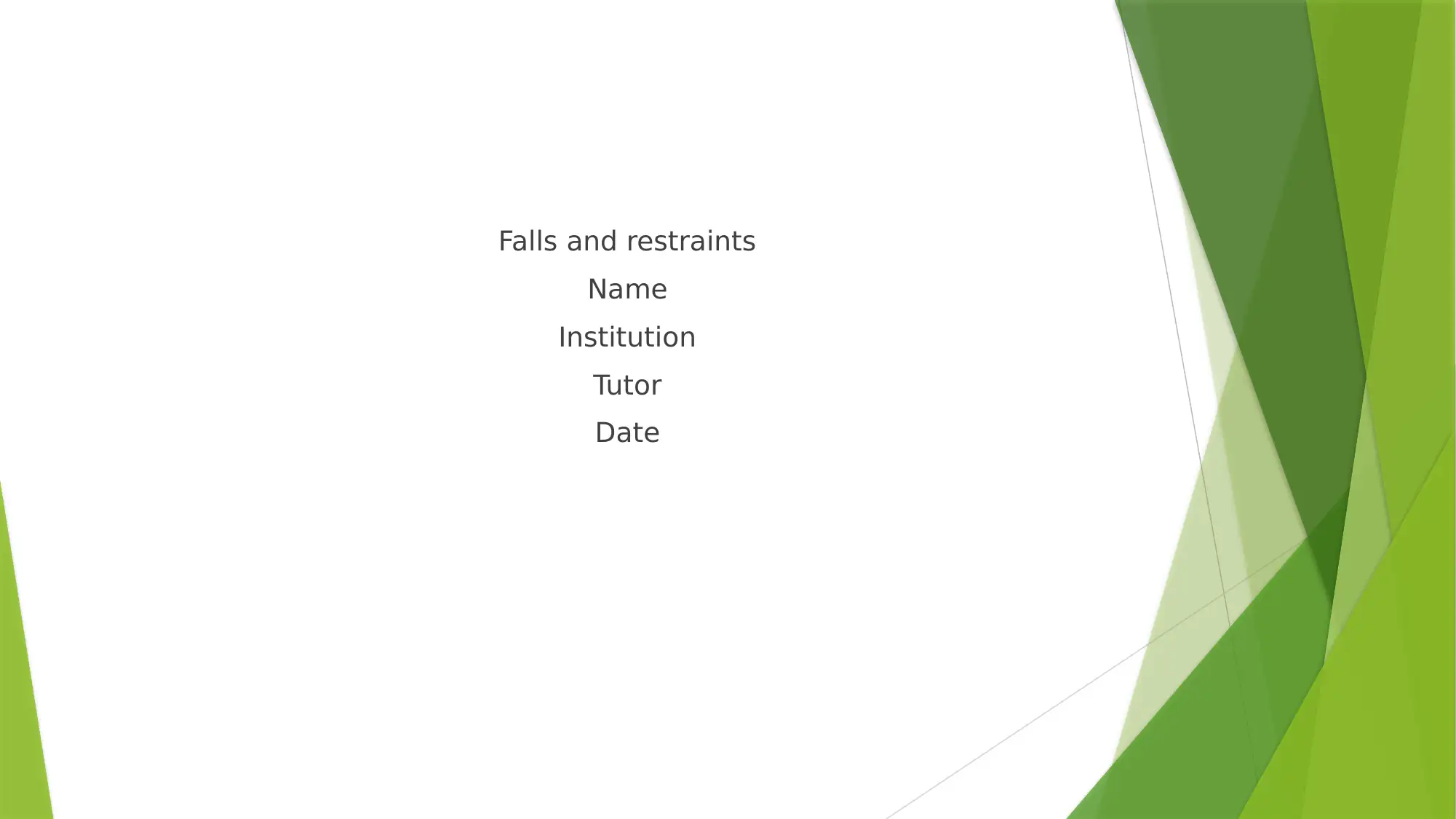
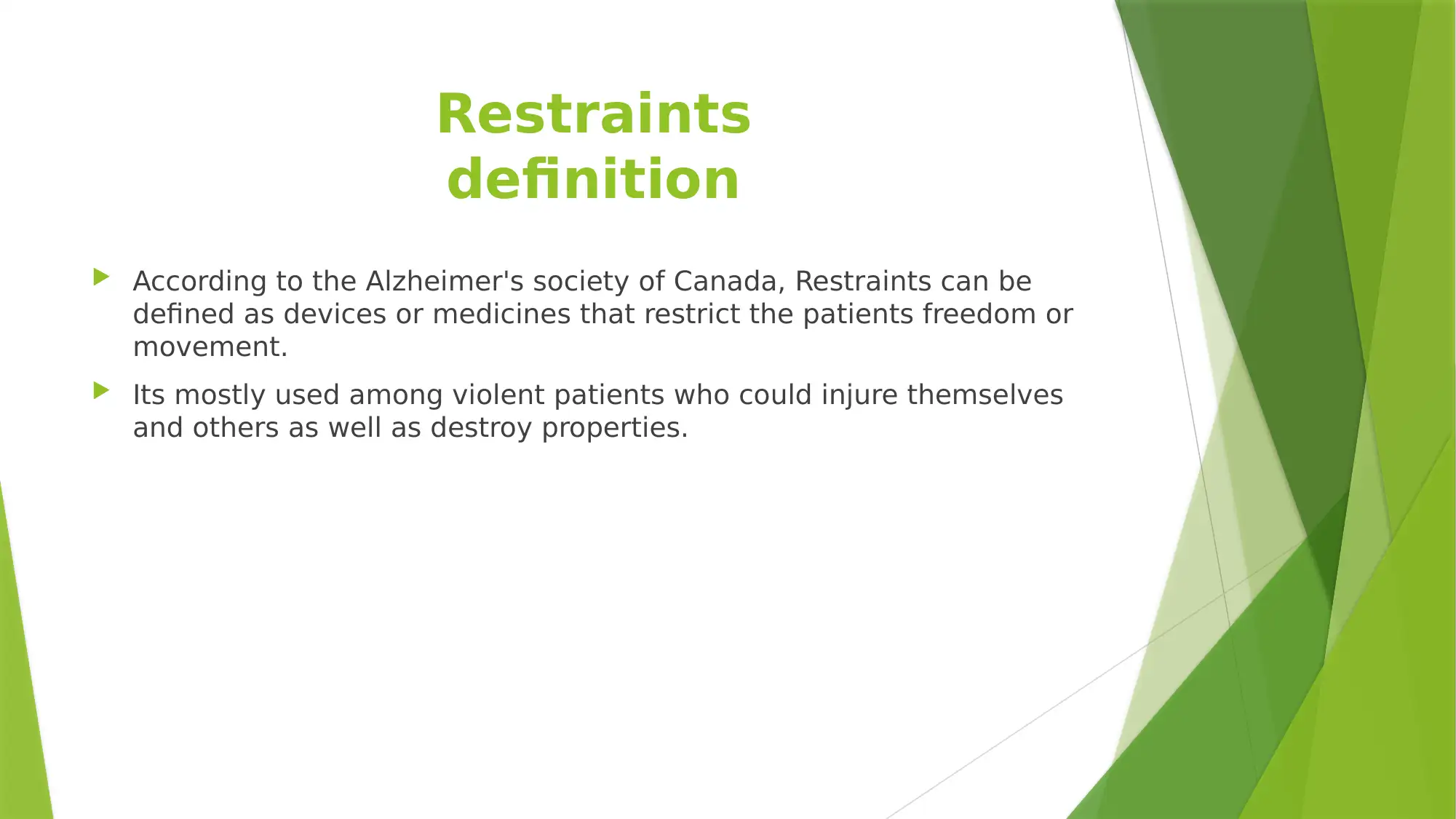
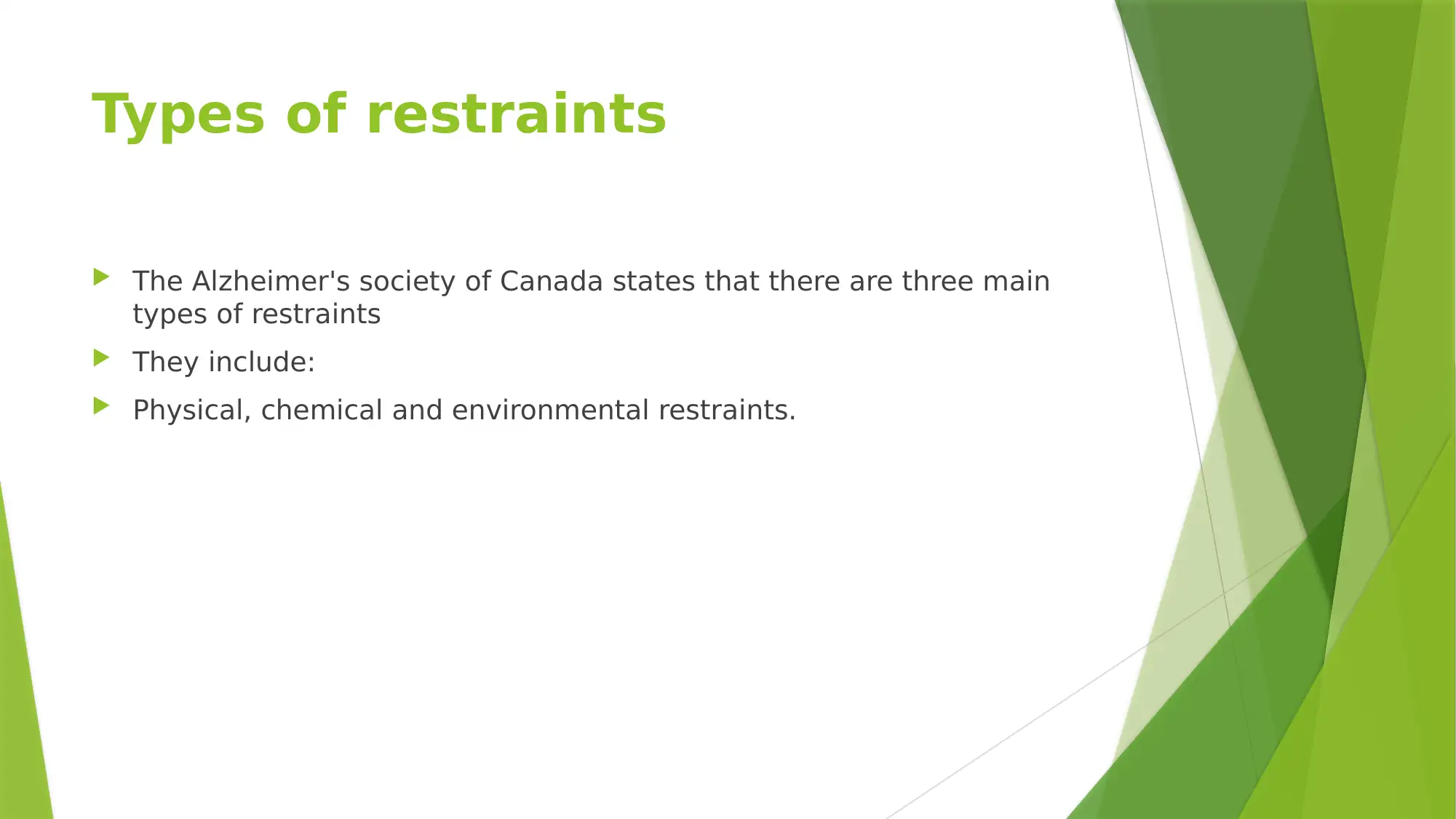

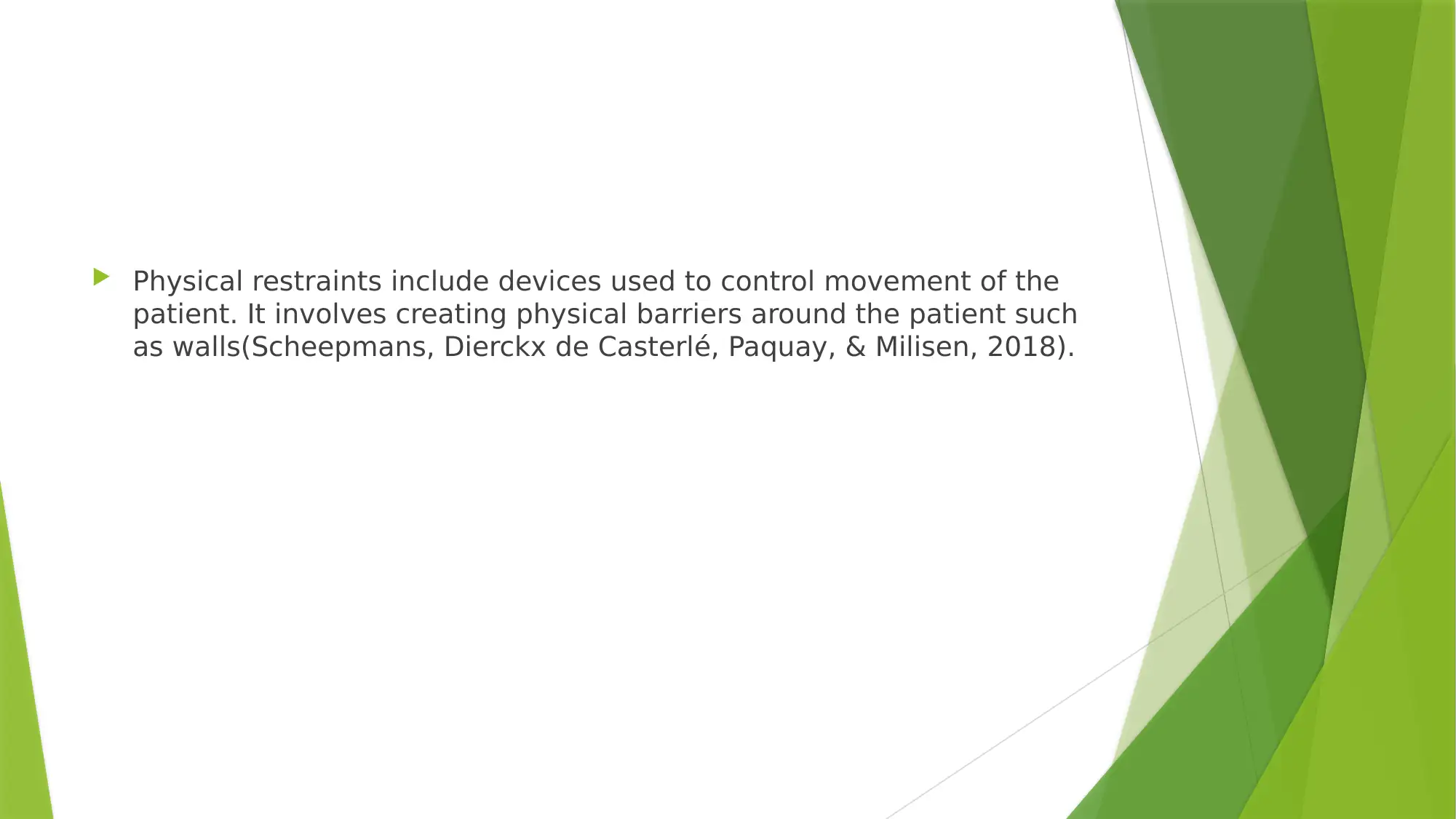
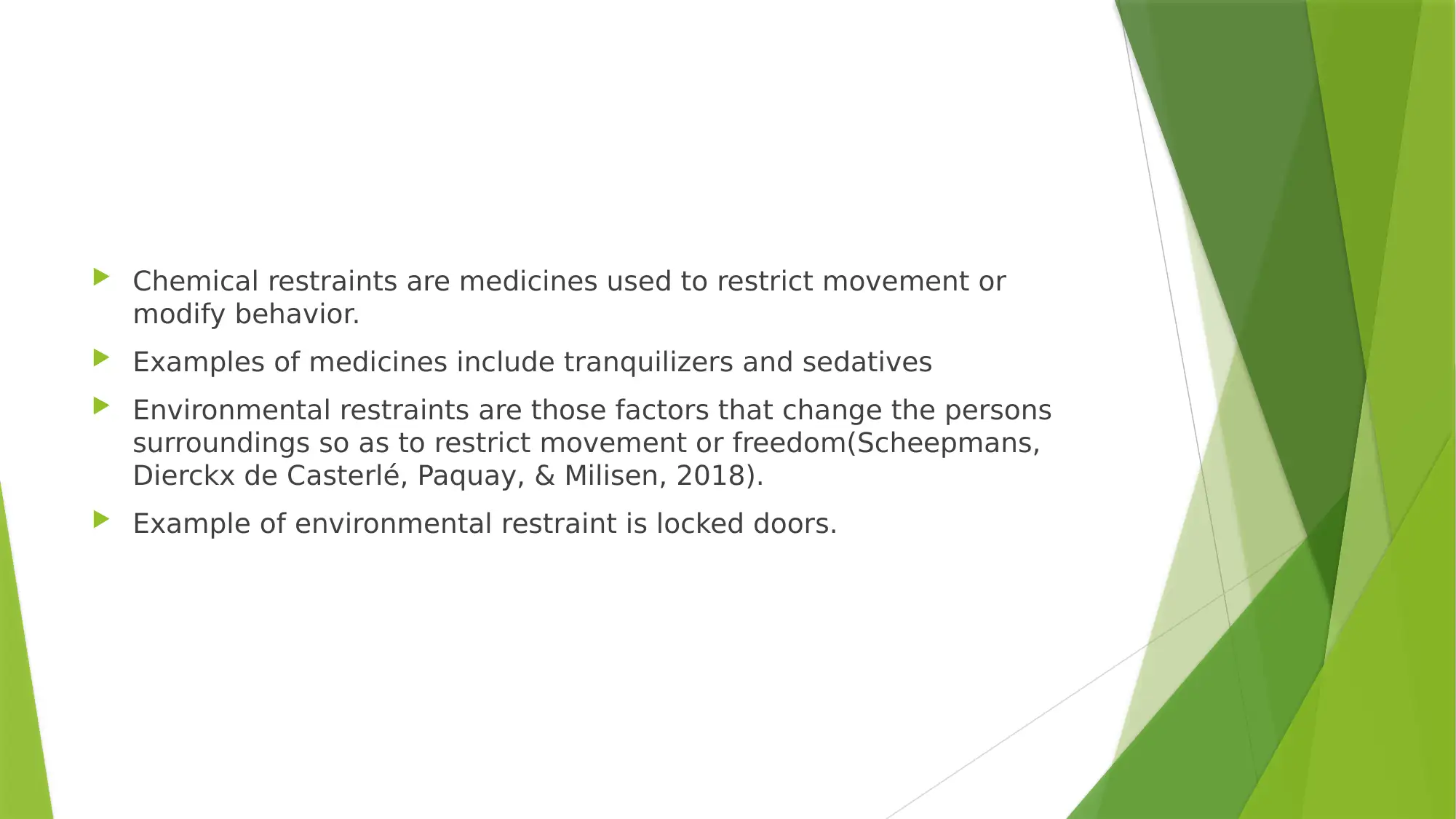
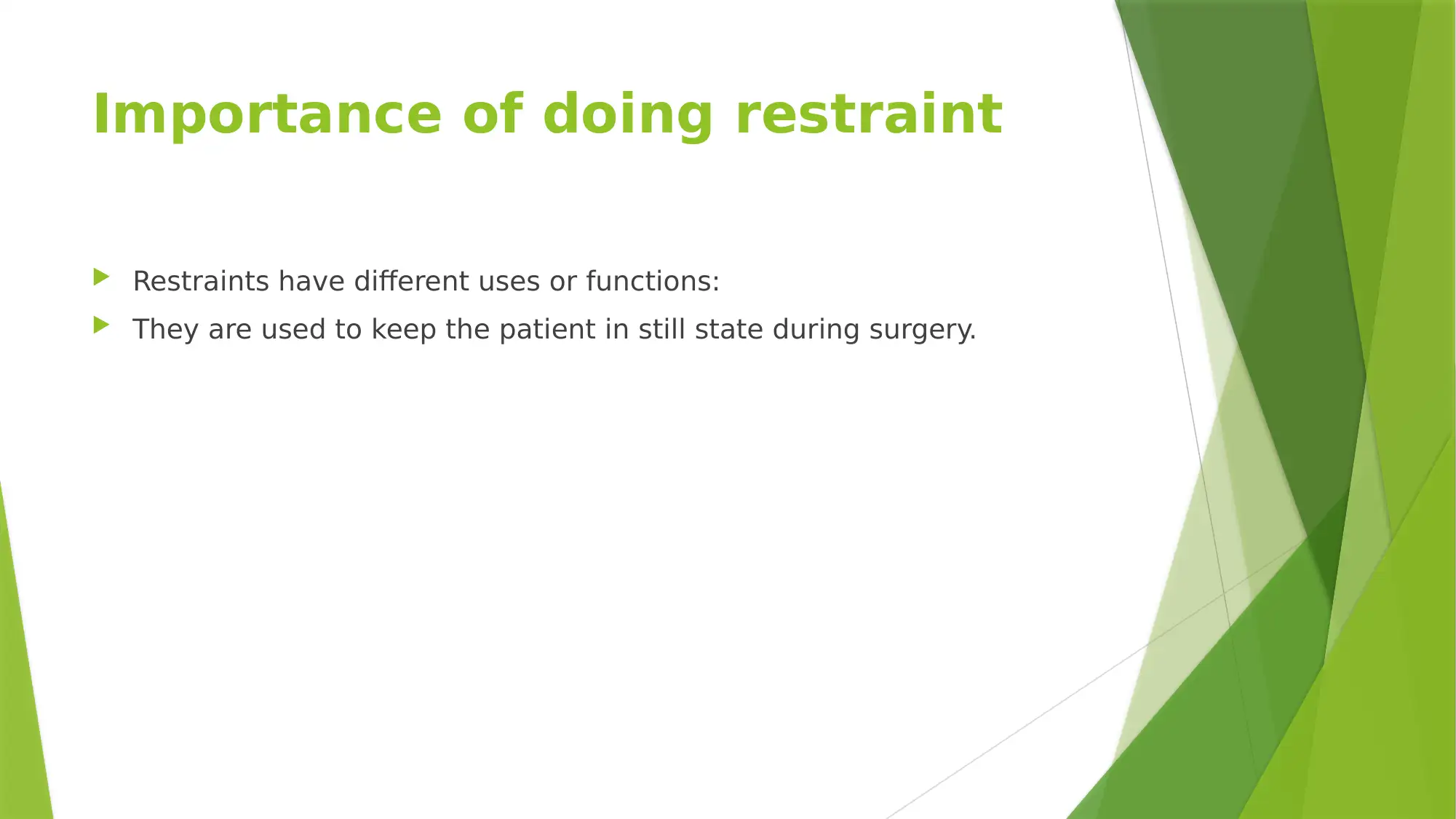
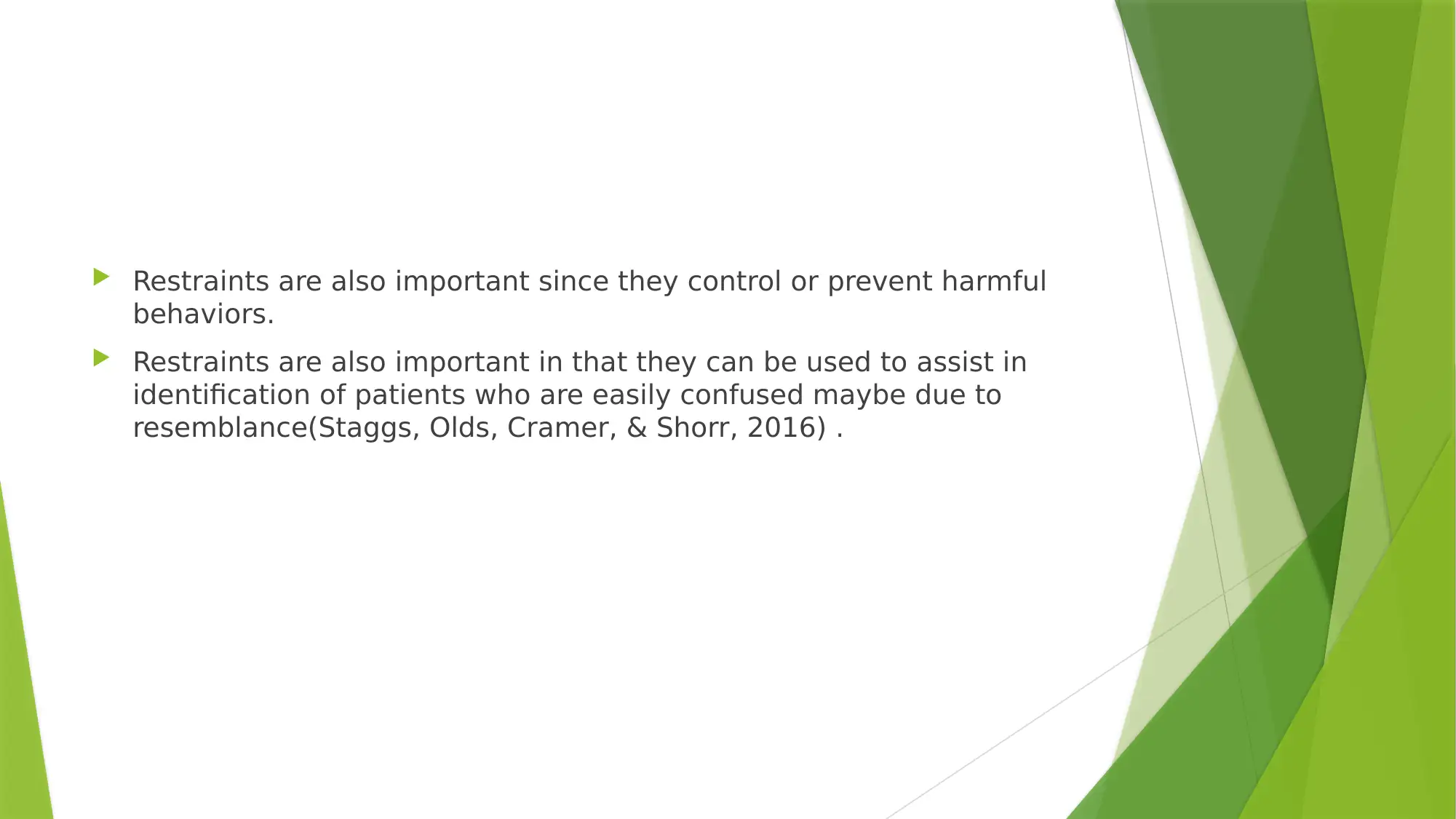
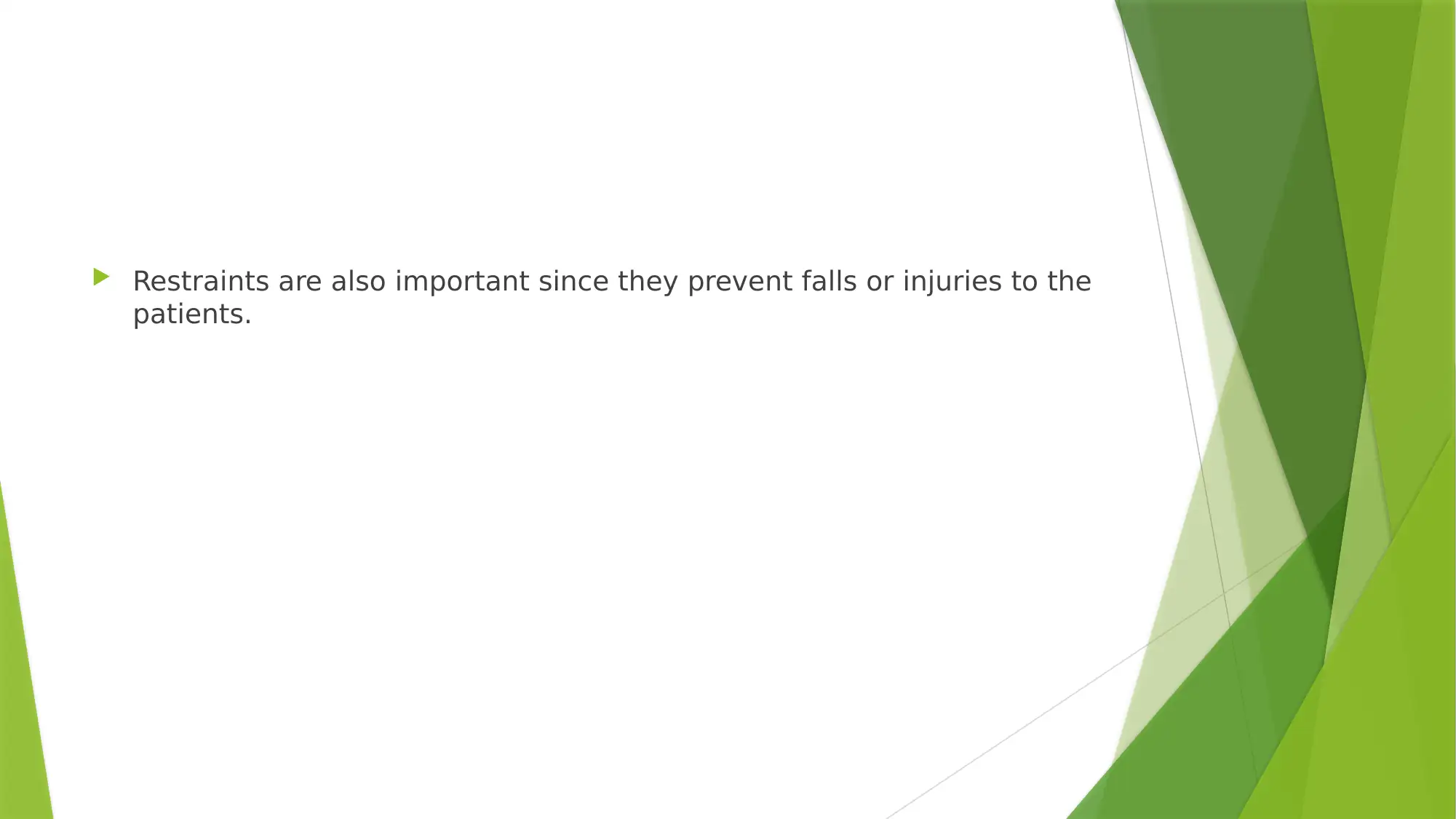
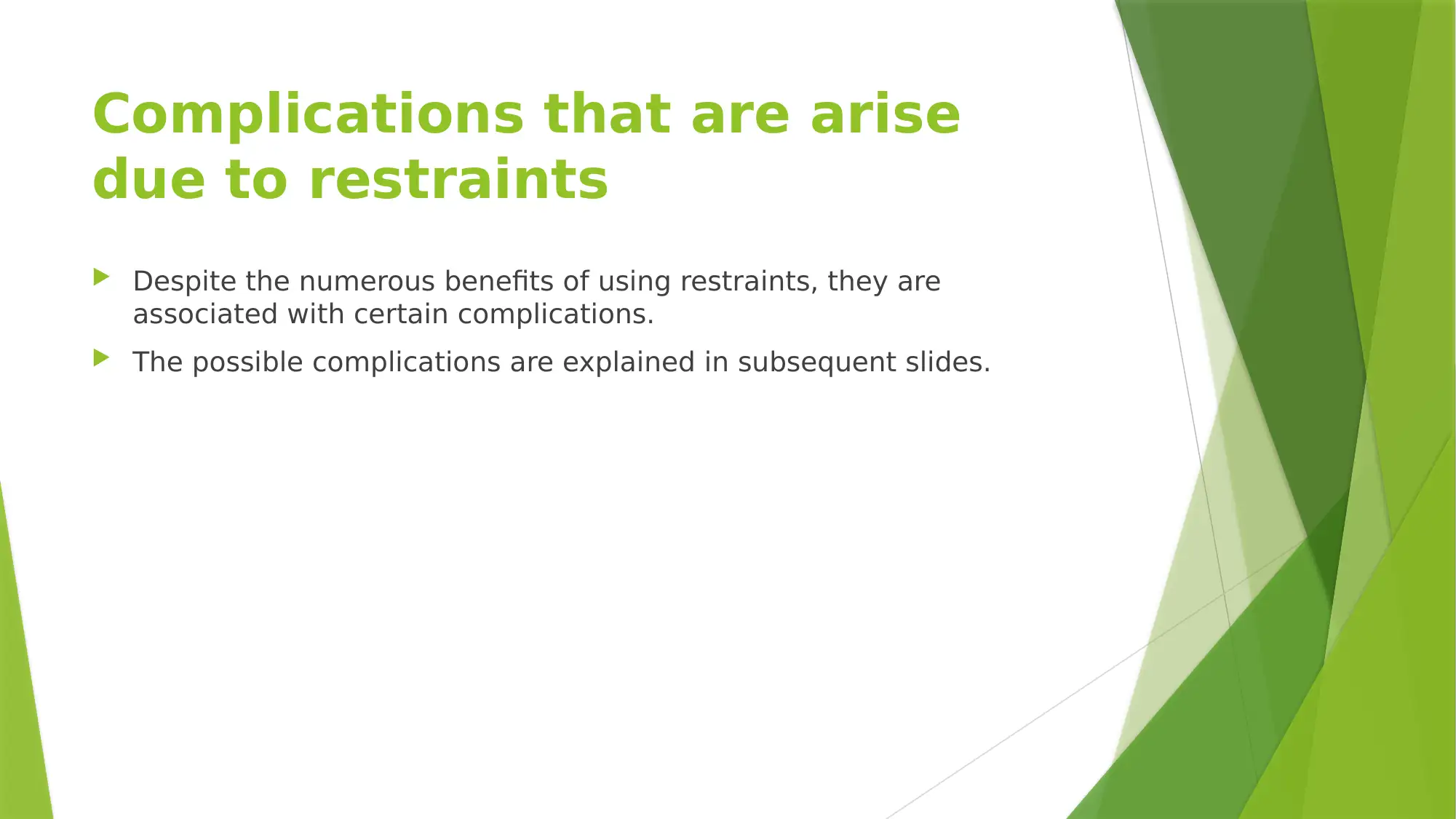
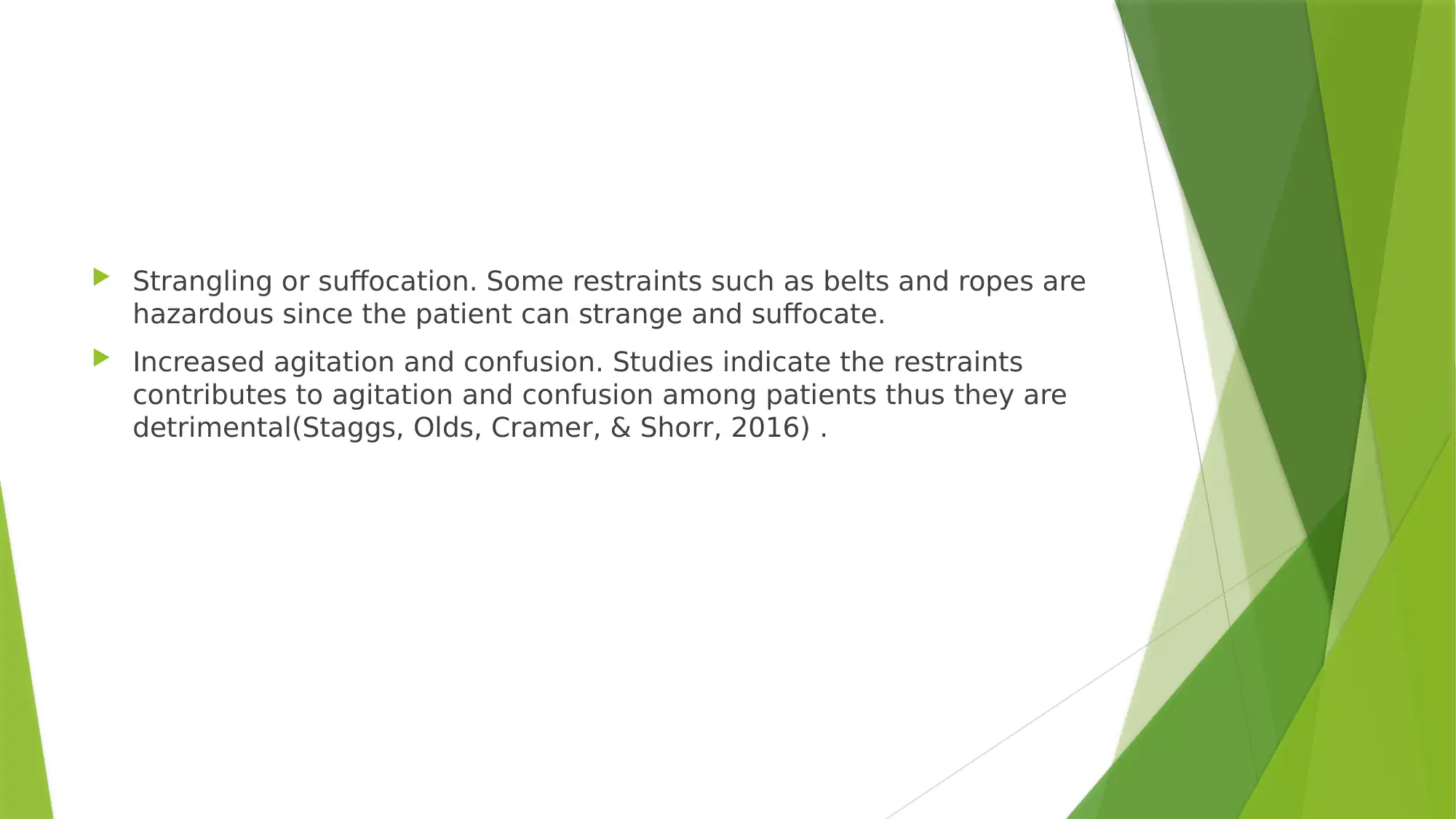
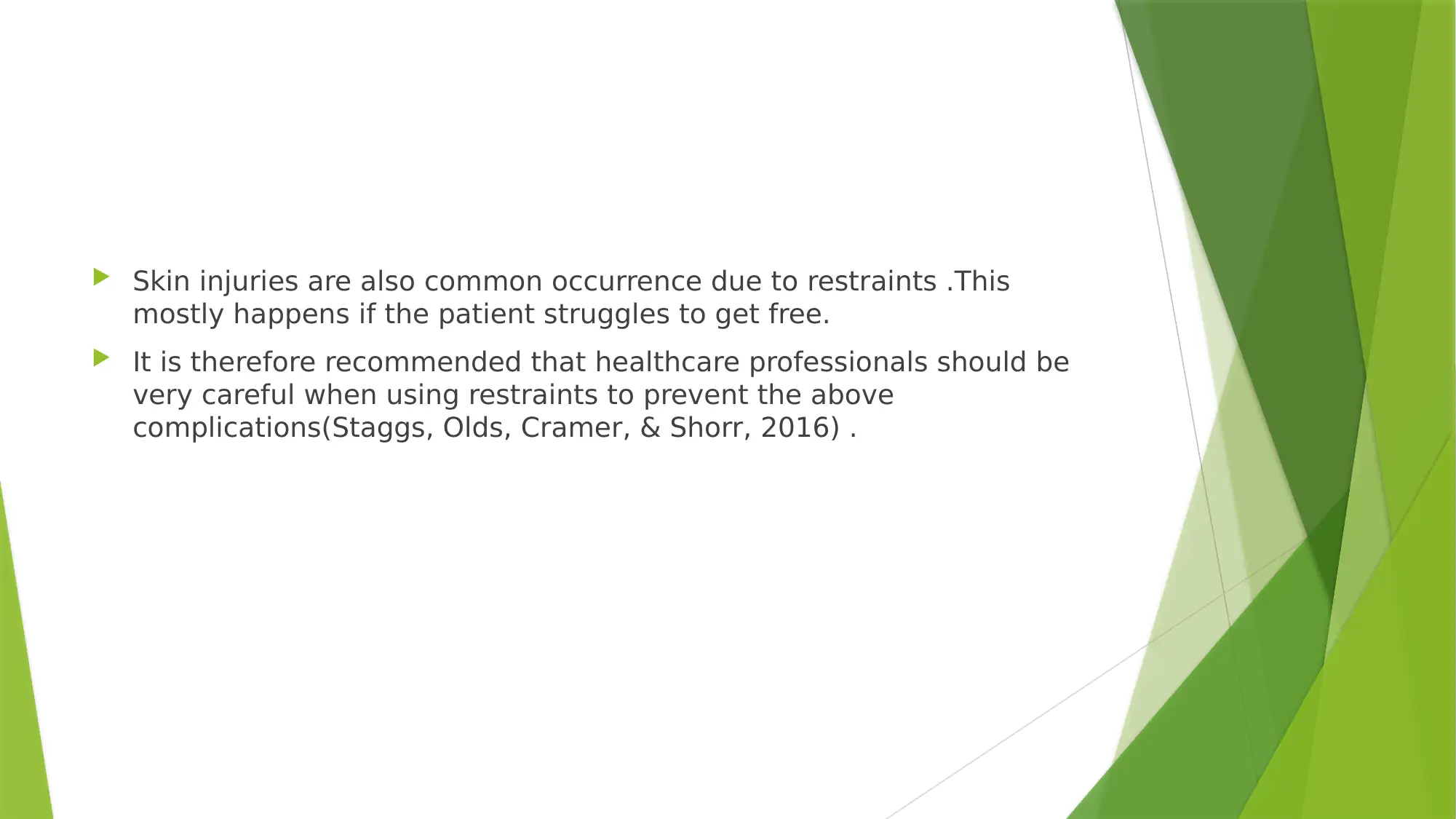
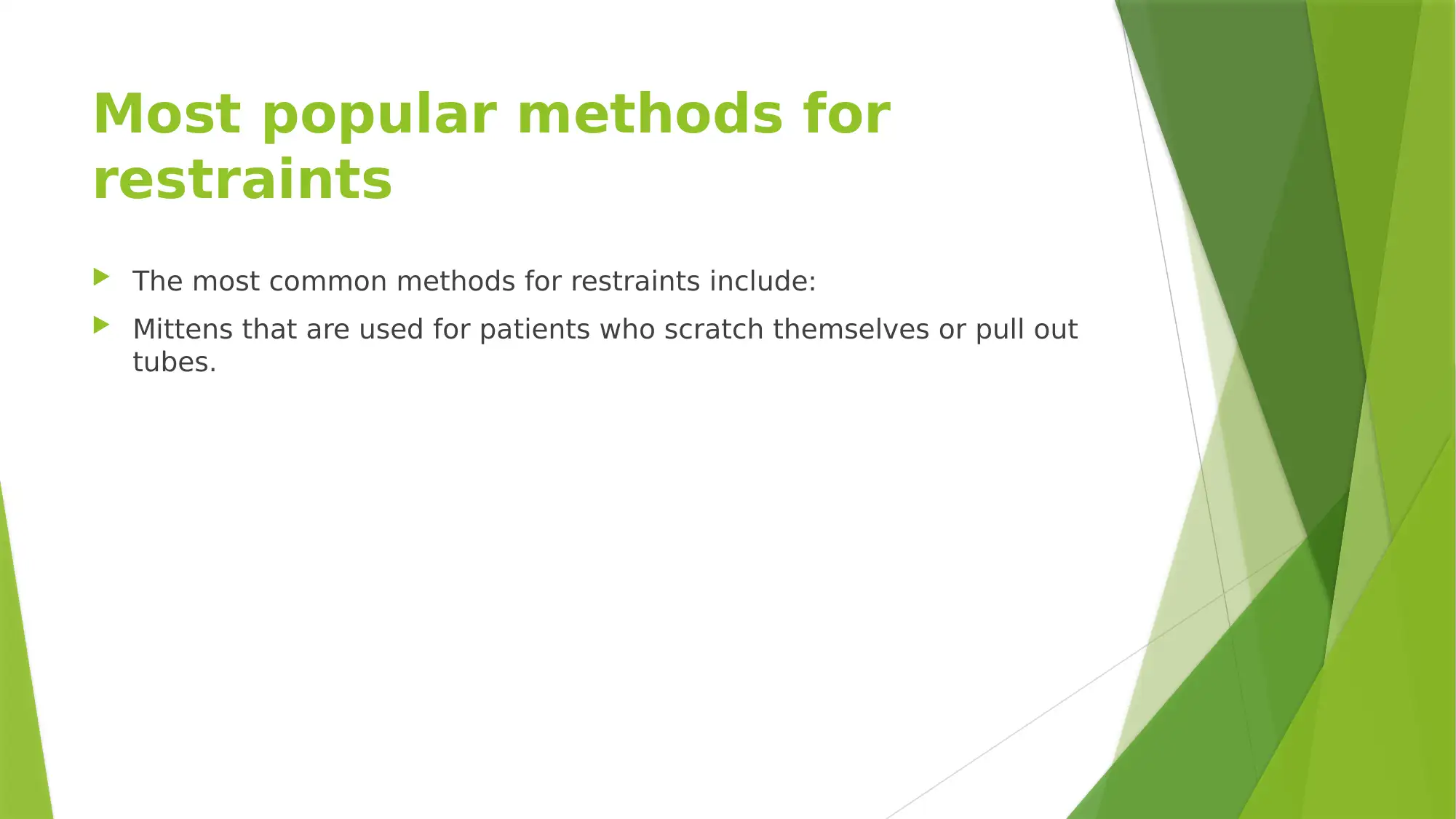
![[object Object]](/_next/static/media/star-bottom.7253800d.svg)